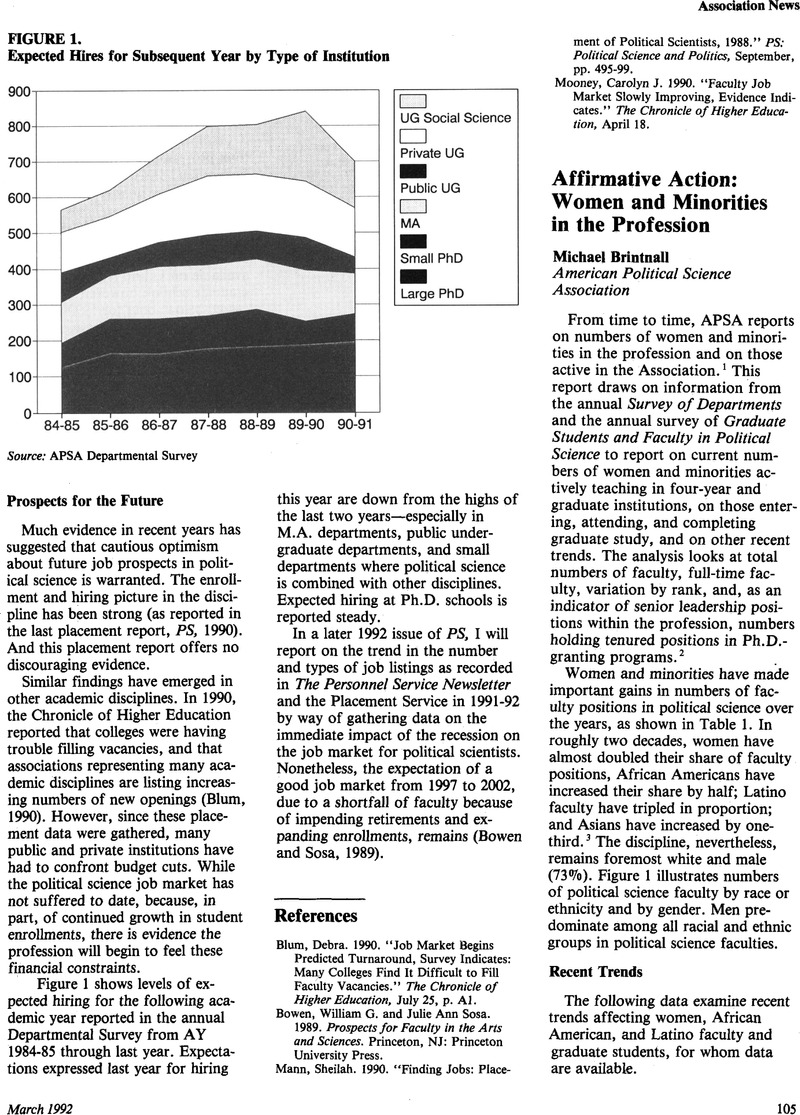Article contents
Affirmative Action: Women and Minorities in the Profession
Published online by Cambridge University Press: 02 September 2013
Abstract

- Type
- News
- Information
- Copyright
- Copyright © The American Political Science Association 1992
References
Notes
1. Some of the earlier studies include Hauck, Robert J-P., 1984, “Affirmative Action: Recognition of Women and Minorities in the Association,” PS (Fall), pp. 809–10Google Scholar; N.A., , 1989. “Affirmative Action in the 80s: Recognition of Women and Minorities in the APSA,” PS (March), pp. 103–4Google Scholar; and Departmental Services Program, Survey of Departments, APSA, for various years since 1971–1972.Google Scholar But see the following note regarding information about comparability of data. There is also a paper forthcoming in PS by the Committee on the Status of Women on improving the status of women in political science.
2. Data on faculty are adjusted from the raw data in the departmental and graduate surveys in two ways. First data are adjusted for non-responses by separately weighting for non-response rates each type of institution responding (Ph.D.-granting, M.A.-granting, four-year degree, and four-year programs in which political science is combined with other fields). This provides estimates for the professoriate as a whole. Then the annual data were smoothed using first order running medians of three.
For these two reasons most data here are not exactly comparable to raw numbers reported in past Departmental Surveys and some PS reports on historical trends. However, the underlying data and its basic forms are the same.
3. Data on numbers of Native Americans have been collected since 1981, but reported numbers have fluctuated wildly from 2 to 126 and no time series is attempted here.
4. The 1948 data actually refer to members of APSA, not faculty per se. They were compiled by Phyllis G. Wherley and reported in an appendix to the 1948 Directory of the Association.
5. National Academy of Sciences, Summary Report 1990: Doctorate Recipients from United States Universities, National Academy Press, 1991.Google Scholar
- 3
- Cited by


